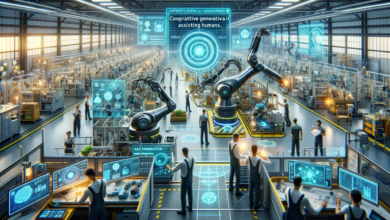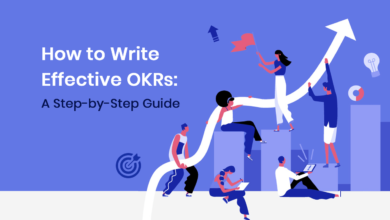Look AIGeneratedCriddle FinancialTimes: Insights into AI and Modern Journalism

The Look aigeneratedcriddle financialtimes highlights a fascinating intersection between artificial intelligence, technology journalism, and the renowned Financial Times (FT). At the core of this discussion is Cristina Criddle, a technology journalist who has gained prominence for her insightful coverage of AI advancements and their societal implications. Let’s dive deeper into the significance of this topic, exploring Cristina Criddle’s work, AI-generated content, and its evolving role in the media landscape.
Understanding the Keyword: Look AIGeneratedCriddle FinancialTimes
Breaking down the keyword:
- Look: Refers to exploring or analyzing a specific subject, in this case, AI and Cristina Criddle’s contributions.
- AIGenerated: Highlights the growing prevalence of AI-generated tools, content, and their impact on industries, including journalism.
- Criddle: Refers to Cristina Criddle, a journalist specializing in AI and technology at the Financial Times.
- FinancialTimes: A globally respected publication known for its high-quality business, technology, and world affairs reporting.
Combining these elements reveals a narrative about AI, its applications in media, and Cristina Criddle’s journalism.
Who Is Cristina Criddle?
Cristina Criddle is a celebrated journalist at the Financial Times, renowned for her expertise in AI, social media, and technology. She was recognized with gold at the 2023 MHP Group 30ToWatch Journalism Awards, reflecting her influence in tech journalism.
Criddle’s articles focus on AI’s transformative potential, particularly generative AI. Her work delves into how technology is reshaping industries, from job interviews to corporate decision-making, while examining the challenges posed by such innovations.
The Rise of AI-Generated Content
AI-generated content has revolutionized journalism, marketing, and entertainment. Generative AI tools like ChatGPT and OpenAI’s DALL·E have made it possible to produce high-quality written and visual content in seconds. But what are the implications for the media?
Advantages of AI in Journalism
- Efficiency: AI tools can quickly generate drafts or summaries, saving journalists time.
- Data Analysis: AI can process large datasets, providing insights and trends for investigative reporting.
- Personalization: AI helps tailor news content to individual reader preferences.
Challenges of AI in Journalism
- Accuracy and Bias: AI models may perpetuate biases or produce inaccurate information if not carefully monitored.
- Ethical Concerns: Using AI to generate content raises questions about authenticity and originality.
- Job Displacement: There’s an ongoing debate about AI replacing human journalists in specific roles.
Cristina Criddle’s Reporting on AI
Criddle has extensively covered AI’s integration into businesses and society. Some of her notable articles include:
- OpenAI and AGI
- Criddle reported OpenAI’s controversial decision to remove clauses limiting Microsoft’s access to its advanced AI models. This shift reflects the company’s pursuit of artificial general intelligence (AGI) and aims to attract further investment. However, it has drawn criticism from figures like Elon Musk, emphasizing the tension between innovation and ethics.
- AI in Recruitment
- Criddle explored how AI is changing job interviews. With tools like ChatGPT helping candidates tailor resumes and answer questions, recruitment processes have become more stringent. Companies are implementing multiple interviews, technical tests, and assignments to identify the best talent.
- AI Agents in Business
- Another insightful piece examined the role of AI agents in transforming business operations. From recruitment to billing, AI-powered tools are streamlining processes. However, Criddle noted widespread adoption needs to be faster due to managerial resistance and ethical concerns.
The Financial Times and AI Reporting
The Financial Times stands out as a leader in tech journalism. Its coverage of AI extends beyond technical developments to include societal, ethical, and economic implications. The FT’s commitment to in-depth analysis ensures readers understand what AI does and why it matters.
How the Financial Times Uses AI
- Content Optimization: AI helps analyze reader behaviour, enabling the FT to deliver personalized recommendations.
- Data Journalism: The publication leverages AI for visualizing complex datasets, making stories more engaging.
- AI-Assisted Writing: While human journalists like Criddle provide the core content, AI assists in research and editing.
The Role of AI-Generated Journalism
As AI continues to evolve, its function in journalism will only grow. Cristina Criddle’s work exemplifies how journalists can leverage AI without compromising quality or ethics. Here are some ways AI-generated content is shaping journalism:
Automated Reporting
AI can generate reports on routine weather updates, sports scores, and stock market summaries, enabling journalists to focus on more in-depth investigations.
Enhanced Research
AI tools like Natural Language Processing (NLP) can sift through vast information and identify crucial trends and insights for journalists.
Real-Time Fact-Checking
AI systems can verify facts and sources in real time, reducing errors and enhancing credibility.
Balancing Human Creativity and AI Efficiency
While AI offers numerous benefits, the human element remains irreplaceable in journalism. Cristina Criddle’s articles testify to the power of human creativity, curiosity, and critical thinking. She provides nuanced perspectives that AI alone cannot achieve.
Why Human Journalists Are Still Essential
- Ethical Judgment: AI cannot make ethical decisions, which is a crucial aspect of journalism.
- Emotional Intelligence: Human journalists can understand and convey emotions, making stories more relatable.
- Investigative Skills: Complex investigations often require human intuition and persistence.
The Future of AI and Journalism
Looking ahead, the synergy between AI and journalism is expected to deepen. Publications like the Financial Times will continue to innovate, integrating AI tools to enhance reporting while maintaining journalistic integrity.
Predicted Trends
- AI-Powered Newsrooms: AI tools will assist in every stage of the journalistic process, from research to publishing.
- Hyper-Personalized Content: Thanks to AI algorithms, readers will receive news tailored to their preferences.
- Collaborative Journalism: AI and human journalists will work together to produce more accurate and engaging stories.
Conclusion
The Look aigeneratedcriddle financialtimes encapsulates a dynamic field where artificial intelligence meets modern journalism. Cristina Criddle’s impactful reporting at the Financial Times illustrates the potential and challenges of AI in today’s world.
As AI continues to shape industries, journalism stands at a crossroads. Journalists can navigate this transformation effectively by embracing AI tools while upholding ethical standards. Cristina Criddle’s work and the Financial Times’ work are models for integrating technology into storytelling without losing the human touch.



